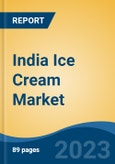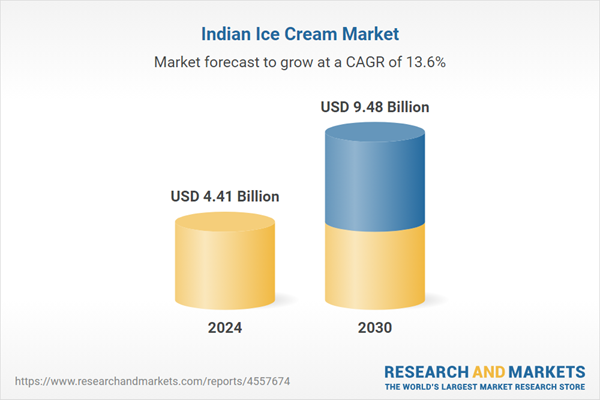Speak directly to the analyst to clarify any post sales queries you may have.
10% Free customizationThis report comes with 10% free customization, enabling you to add data that meets your specific business needs.
Key Market Drivers
Rising Disposable Incomes and Changing Lifestyles
A key driver of growth in the India ice cream market is the increase in disposable income and evolving consumer habits. With India’s per capita disposable income rising from USD 2.11 thousand in 2019 to USD 2.54 thousand in 2023, spending on discretionary and indulgent products like ice cream has grown significantly. Ice cream, once viewed as an occasional luxury, is now a regular household item in many urban and semi-urban areas. The growing trend of celebrating smaller occasions, dining out more frequently, and opting for convenience foods has increased the number of consumption occasions for ice cream. Consumers now have access to various formats - from single-serve cups to family packs - catering to different budgets and preferences. This transformation in lifestyle and consumption behavior continues to drive strong demand across demographic segments.Key Market Challenges
Inadequate Cold Chain and Storage Infrastructure
A major constraint for the Indian ice cream market is the limited and uneven development of cold chain infrastructure, especially in tier 2, tier 3, and rural markets. Ice cream requires strict temperature control throughout the supply chain - from production and transport to retail display. In many regions, challenges such as unreliable electricity, insufficient cold storage capacity, and lack of temperature-controlled logistics hinder distribution and availability. These infrastructure gaps lead to product spoilage, reduced shelf life, and limited reach for manufacturers. The cost of operating cold chains, including backup generators and specialized equipment, is high and particularly burdensome for smaller brands. As a result, the market struggles to tap into rural demand despite rising consumption potential. Overcoming this challenge will require strategic investment in refrigeration and logistics solutions at scale.Key Market Trends
Surge in Demand for Healthier and Functional Ice Cream Options
Health and wellness trends are reshaping consumer preferences in India’s ice cream market. With 63% of consumers actively seeking healthier snacks in 2025 and 50% checking ingredient labels, brands are innovating with products that deliver on both indulgence and nutrition. The market has seen a notable increase in low-calorie, low-sugar, lactose-free, and vegan ice creams made from almond, soy, or coconut milk.High-protein and probiotic variants are also emerging to meet demand from fitness-conscious consumers. Natural sweeteners like stevia and fruit pulp are replacing refined sugars in many new offerings. This shift toward clean-label, functional ice creams is driven by rising awareness around diet-related health issues and a growing preference for guilt-free indulgence. Both startups and established brands are leveraging this trend through transparent branding, eco-conscious packaging, and differentiated product portfolios to capture the attention of health-aware consumers.
Key Market Players
- Gujarat Co-operative Milk Marketing Federation Ltd
- Vadilal Industries Ltd
- Mother Dairy Fruit & Vegetable Pvt Ltd
- Hindustan Unilever Limited
- Devyani Food Industries Ltd
- Dinshaws Dairy Foods Pvt. Ltd
- Havmor Ice Cream Pvt Ltd
- Ramani Icecream Company Limited
- Dairy Classic Ice Creams Pvt. Ltd.
- General Mills Inc.
Report Scope:
In this report, the India Ice Cream Market has been segmented into the following categories, in addition to the industry trends which have also been detailed below:India Ice Cream Market, By Product Type:
- Cup
- Stick
- Cone
- Brick
- Tub
- Others
India Ice Cream Market, By Type:
- Dairy
- Vegan
India Ice Cream Market, By Distribution Channel:
- Supermarkets/Hypermarkets
- Convenience Stores
- Online
- Others
India Ice Cream Market, By Region:
- North
- South
- East
- West
Competitive Landscape
Company Profiles: Detailed analysis of the major companies present in the India Ice Cream Market.Available Customizations:
With the given market data, the publisher offers customizations according to a company's specific needs. The following customization options are available for the report.Company Information
- Detailed analysis and profiling of additional market players (up to five).
This product will be delivered within 1-3 business days.
Table of Contents
Companies Mentioned
- Gujarat Co-operative Milk Marketing Federation Ltd
- Vadilal Industries Ltd
- Mother Dairy Fruit & Vegetable Pvt Ltd
- Hindustan Unilever Limited
- Devyani Food Industries Ltd
- Dinshaws Dairy Foods Pvt. Ltd
- Havmor Ice Cream Pvt Ltd
- Ramani Icecream Company Limited
- Dairy Classic Ice Creams Pvt. Ltd.
- General Mills Inc.
Table Information
| Report Attribute | Details |
|---|---|
| No. of Pages | 85 |
| Published | July 2025 |
| Forecast Period | 2024 - 2030 |
| Estimated Market Value ( USD | $ 4.41 Billion |
| Forecasted Market Value ( USD | $ 9.48 Billion |
| Compound Annual Growth Rate | 13.6% |
| Regions Covered | India |
| No. of Companies Mentioned | 10 |









